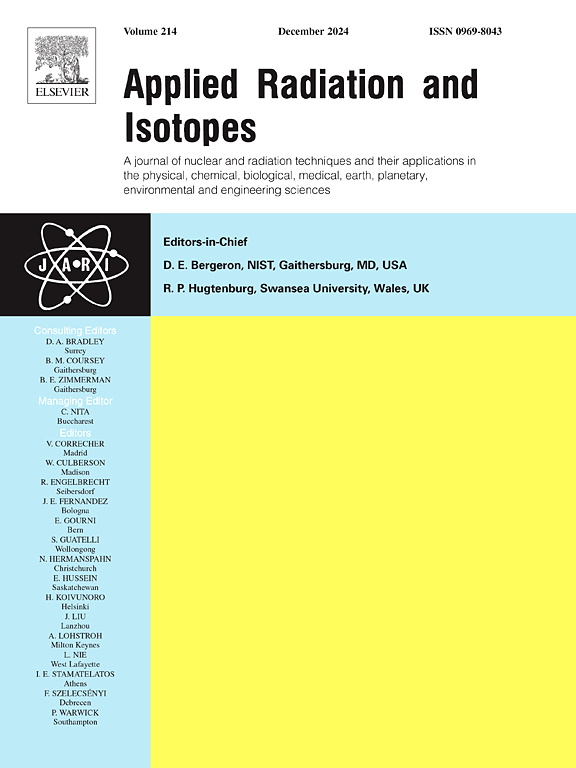为TRIGA MARK II研究堆开发了一种新的稳态热水力和安全分析代码OpenTHY
IF 1.6
3区 工程技术
Q3 CHEMISTRY, INORGANIC & NUCLEAR
引用次数: 0
摘要
本文介绍了一种新的强大的计算机代码OpenTHY的发展,用于TRIGA型研究堆在燃料销周围单相流情况下的热水力安全分析。该规范用于为摩洛哥反应堆准备一个非常详细的热水力模型,以研究自然对流模式下堆芯冷却的效率,并确保反应堆在尊重所有安全限制的情况下安全运行。OpenTHY规范也有可能考虑到插入环形燃料棒中的锆棒的存在,这对于避免由于氢超压导致的包层失效至关重要。燃料元件被离散成多个轴向部分,每个部分进一步细分为各种细分,覆盖四个不同的区域:包层、间隙、活性燃料和锆棒。有效部分被径向划分为相当数量的细分,允许功率峰值因子在轴向和径向上的详细空间分布。然后,利用单通道模型和传热系数与临界热流密度的特定关联计算不同的热工安全参数,确定冷却剂和燃料元件在不同轴向和径向位置的温度分布,以及堆芯最热通道各轴向细分的临界热流密度(CHF)和离核沸腾比(DNBR)。对其他堆芯结构进行了评估,并通过与两个仪器燃料元件在不同功率水平下的温度实验测量结果进行了比较,验证了OpenTHY代码获得的结果。本文还介绍了用PARET/ANL代码计算的结果。从这些输出数据可以看出,在自然对流冷却条件下,反应堆的安全性得到了保证,活性燃料棒包壳外表面和内表面的最高温度分布图与TRIGA安全分析报告(SAR)规定的安全限值相差很大。此外,mnbr值远高于设计限值1.3,这保证了2MW TRIGA MARK II在正常条件下的安全运行。本文章由计算机程序翻译,如有差异,请以英文原文为准。
Development of a new steady-state thermal hydraulic and safety analysis code, OpenTHY, for a TRIGA MARK II research reactor
This work presents the development of a new powerful computer code OpenTHY for thermal hydraulic safety analysis of TRIGA type research reactor in the case of one-phase flow around the fuel pins. This code is used for preparing a very detailed thermal-hydraulic model for the Moroccan reactor to study the efficiency of core cooling in natural convection mode and to ensure that the reactor is operating in a safely manner respecting all safety limits. The OpenTHY code has also the possibility to take into account the presence of the Zirconium rod that is inserted into an annular fuel rod, which is essential to avoid cladding failure due to the hydrogen overpressure. The fuel element was discretized into multiple axial sections, with each section further subdivided radially into various subdivisions, covering four distinct regions: cladding, gap, active fuel, and zirconium rod. The active part was divided radially into a significant number of subdivisions allowing for detailed spatial distribution of the power peaking factors in both axial and radial directions. Then, we calculated different thermal-hydraulic safety parameters using the single channel model and specific correlations related to heat transfer coefficients and critical heat flux to determine the temperature profiles of coolant and fuel element in different axial and radial locations, the critical heat flux (CHF) and the departure from nucleate boiling ratio (DNBR) in each axial subdivision of the hottest channel of the core. Additional core configurations were evaluated and the results obtained by the OpenTHY code were validated through a comparison with experimental measures of temperature inside two instrumented fuel elements at various power levels. This study presents also the results calculated by PARET/ANL code. From these output data, the safety of the reactor is ensured in the conditions of natural convection-cooling and the maximum temperature profiles at the cladding outer surface and at the inner surface of the active fuel rod remain largely far from safety limits prescribed in TRIGA safety analysis report (SAR). In addition, the MDNBR presents a value widely higher than the design limit of 1.3 which guarantees the safe operation of the 2MW TRIGA MARK II under normal conditions.
求助全文
通过发布文献求助,成功后即可免费获取论文全文。
去求助
来源期刊

Applied Radiation and Isotopes
工程技术-核科学技术
CiteScore
3.00
自引率
12.50%
发文量
406
审稿时长
13.5 months
期刊介绍:
Applied Radiation and Isotopes provides a high quality medium for the publication of substantial, original and scientific and technological papers on the development and peaceful application of nuclear, radiation and radionuclide techniques in chemistry, physics, biochemistry, biology, medicine, security, engineering and in the earth, planetary and environmental sciences, all including dosimetry. Nuclear techniques are defined in the broadest sense and both experimental and theoretical papers are welcome. They include the development and use of α- and β-particles, X-rays and γ-rays, neutrons and other nuclear particles and radiations from all sources, including radionuclides, synchrotron sources, cyclotrons and reactors and from the natural environment.
The journal aims to publish papers with significance to an international audience, containing substantial novelty and scientific impact. The Editors reserve the rights to reject, with or without external review, papers that do not meet these criteria.
Papers dealing with radiation processing, i.e., where radiation is used to bring about a biological, chemical or physical change in a material, should be directed to our sister journal Radiation Physics and Chemistry.
 求助内容:
求助内容: 应助结果提醒方式:
应助结果提醒方式:


